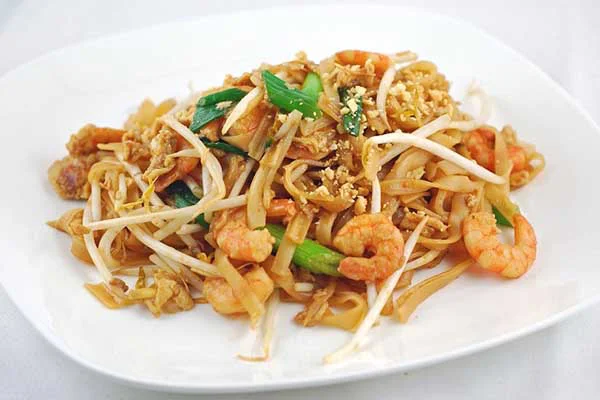Pad Thai
The Tale of Pad Thai: Origins and Culinary Heritage
Introduction:
Pad Thai, a globally acclaimed Thai dish, stands as a testament to the rich culinary tapestry of Thailand. This iconic stir-fried noodle dish has a fascinating history that mirrors the cultural and trade influences that have shaped Thai cuisine over the centuries.
Historical Roots: The origins of Pad Thai can be traced back to the 1930s in Thailand. During this time, the Thai government, under Prime Minister Plaek Phibunsongkhram, sought to promote a sense of national identity and unity. As part of a cultural campaign, he encouraged the consumption of rice noodles, leading to the creation of Pad Thai as a national dish.
Influences on Pad Thai: While Pad Thai is unmistakably Thai, its creation was influenced by a combination of local and international factors. The dish’s primary components, such as rice noodles, tamarind, and shrimp, reflect the abundance of these ingredients in Thai cuisine. The use of peanuts and lime, however, hints at the Chinese and Portuguese culinary influences that have left an indelible mark on Thai cooking.
Key Ingredients:
- Rice Noodles: The foundation of Pad Thai, rice noodles, symbolize the staple crop of Thailand and the region’s rice-growing tradition.
- Tamarind Paste: The tangy and slightly sweet flavor of tamarind paste provides the distinctive taste that sets Pad Thai apart.
- Shrimp or Tofu: Depending on personal preference, Pad Thai can include shrimp or tofu, offering a balance of protein and texture.
- Bean Sprouts and Chives: Fresh bean sprouts and chives contribute a crisp and vibrant element, enhancing the overall texture and visual appeal.
Cooking Technique: Pad Thai is prepared using a quick and high-heat stir-frying technique. The skilled hands of Thai chefs effortlessly toss the ingredients in a wok, ensuring a perfect blend of flavors and textures. The dish is often customized to suit individual preferences, with variations ranging from mild and sweet to spicy and tangy.
Global Popularity: Over the years, Pad Thai has transcended its borders and become a global culinary sensation. Its unique combination of sweet, sour, salty, and spicy flavors has won the hearts and palates of food enthusiasts worldwide. Today, you can find Pad Thai on the menus of Thai restaurants in virtually every corner of the globe.
Conclusion: Pad Thai is not just a dish; it is a cultural emblem that encapsulates the diverse influences and rich history of Thai cuisine. As you savor the delightful flavors of Pad Thai, remember that each bite tells a story of tradition, innovation, and the global journey that has made this dish a beloved symbol of Thailand’s culinary excellence.

